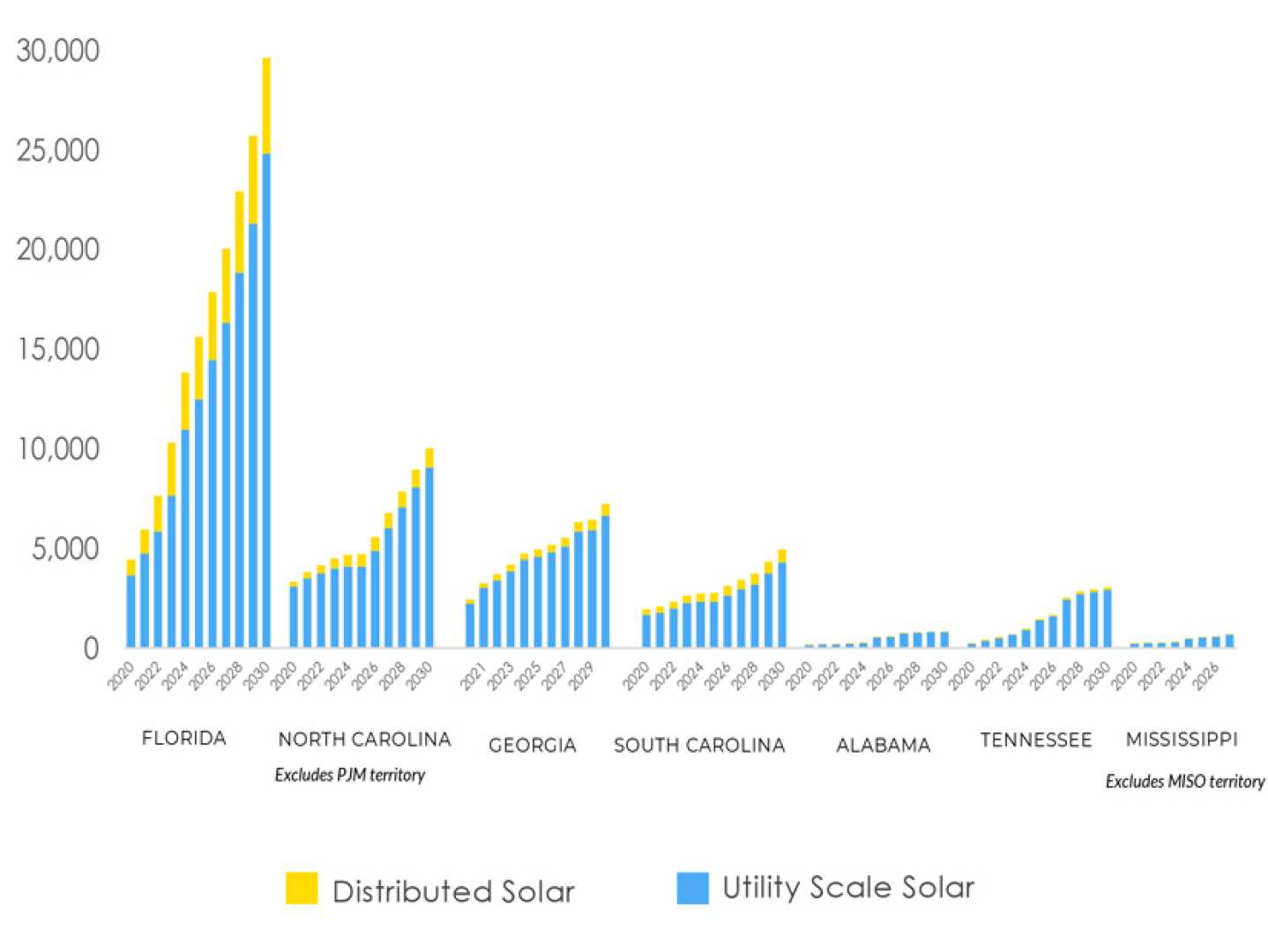News
Southern Co. Increases Solar Power Amid Challenges and Demand

ATLANTA, Georgia — Southern Company added 4 gigawatts of solar power to its grid last year, earning praise from advocates in the clean energy sector. The company, which owns Georgia Power and several other major electric utilities in the Southeast, produced a total of 28 gigawatts of solar energy in 2024. It is expected to double this amount in the next five years, according to a report from the Southern Alliance for Clean Energy (SACE).
Despite resistance to clean energy initiatives from the Trump administration, growth in solar energy generation has been notable. Heather Pohnan, senior energy policy manager for SACE, remarked on the impressive pace of solar installation, noting, “Utilities have added more solar in less time … this is something that hasn’t happened before.”
One gigawatt can power between 800,000 and 1 million homes, underscoring the importance of expanding solar capabilities. The need for additional large solar farms in states like Georgia is pressing due to increased electricity demand from growing data centers. SACE experts believe that solar, along with battery storage, is crucial for meeting this demand while keeping electricity costs manageable.
“Solar is a carbon-free source of electricity and can help reduce greenhouse gas emissions,” Pohnan added.
SACE has long advocated for more renewable energy on the power grid and criticized utility companies for hindering progress. The inclusion of significant solar commitments in electric companies’ long-term plans is seen as a positive development.
“We’re beginning to see some states make some really big bets on solar,” said Stephen Smith, executive director of SACE, during the release of the group’s eighth annual report. The Southeast has historically lagged in solar adoption compared to the rest of the United States, primarily due to the business model of major utilities, which profit from building large power plants that compete with decentralized solar energy.
While critics often cite the intermittent nature of solar power as a drawback—since it cannot produce energy at night or during cloudy days—Smith argued that the rise in battery storage has made these concerns less significant.
In Columbus, Georgia, Georgia Power is currently constructing a battery energy storage system. Smith remarked, “When the utilities have a bias towards burning stuff, that’s something that needs to be countered directly.”
Georgia Power plans a significant expansion of solar energy as part of a strategy to add 10,000 megawatts to its grid over the next five years, marking a 42% increase in electricity generation—a historic first for the company. However, most of this new energy will come from fossil fuels, prompting concerns about cost increases for consumers and further climate impact.
Utilities across the Southeast, including Florida Power & Light Co. and Duke Energy, are also investing in fossil fuels, claiming they provide quicker and more reliable energy solutions than renewables. Advocates warn that increasing reliance on fossil fuels will burden consumers with additional costs and worsen climate change.
In contrast, Florida Power & Light aims to more than double its solar and battery storage capacity by 2035. Smith acknowledged the positive direction of Southern Company’s solar initiatives, even as he pointed out the company has historically faced criticism for obstructing rooftop solar.
A Georgia Power spokesperson stated, “Georgia has consistently been a top ten state for solar, and Georgia Power is proud of how we have worked with the Georgia Public Service Commission to responsibly develop solar.”
This news coverage is supported by a partnership with the Green South Foundation and Journalism Funding Partners.












